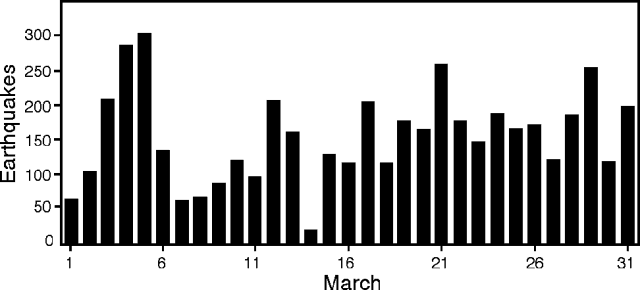Report on Poas (Costa Rica) — March 1993
Bulletin of the Global Volcanism Network, vol. 18, no. 3 (March 1993)
Managing Editor: Edward Venzke.
Poas (Costa Rica) Gas columns to 500 m; gradual deflation
Please cite this report as:
Global Volcanism Program, 1993. Report on Poas (Costa Rica) (Venzke, E., ed.). Bulletin of the Global Volcanism Network, 18:3. Smithsonian Institution. https://doi.org/10.5479/si.GVP.BGVN199303-345040
Poas
Costa Rica
10.2°N, 84.233°W; summit elev. 2697 m
All times are local (unless otherwise noted)
Fumarolic activity in the N part of the crater lake continued as gas columns rose 500 m, one of them producing a jet-like noise that could be heard at the observation site, 1 km S of the active crater. The turquoise-green lake had a temperature of 67°C and contained floating patches of sulfur. Plumes to 1 m rose from sporadic phreatic eruptions in the central and SE portions of the lake.
During March, the seismic station 2.5 km SW of the main crater recorded 4,825 low-frequency events, an average of 156 events/day (figure 43). An earthquake of M 2.3, located 6 km SW of the main crater at 9 km depth, occurred on 25 March at 0813 GMT.
 |
Figure 43. Seismic events/day recorded 2.5 km SW of the main crater of Poás, March 1993. Courtesy of OVSICORI. |
A precise level line running 1.8 km S down the main edifice from the observation site showed possible deflation since June 1992. Measurements at a dry-tilt site also indicated deflation. EDM measurements to the inner cone have not significantly changed since January 1991.
Geological Summary. The broad vegetated edifice of Poás, one of the most active volcanoes of Costa Rica, contains three craters along a N-S line. The frequently visited multi-hued summit crater lakes of the basaltic-to-dacitic volcano are easily accessible by vehicle from the nearby capital city of San José. A N-S-trending fissure cutting the complex stratovolcano extends to the lower N flank, where it has produced the Congo stratovolcano and several lake-filled maars. The southernmost of the two summit crater lakes, Botos, last erupted about 7,500 years ago. The more prominent geothermally heated northern lake, Laguna Caliente, is one of the world's most acidic natural lakes, with a pH of near zero. It has been the site of frequent phreatic and phreatomagmatic eruptions since an eruption was reported in 1828. Eruptions often include geyser-like ejections of crater-lake water.
Information Contacts: E. Fernández, J. Barquero, V. Barboza, T. Marino, R. Van der Laat, F. de Obaldía, and R. Sáenz, OVSICORI.

